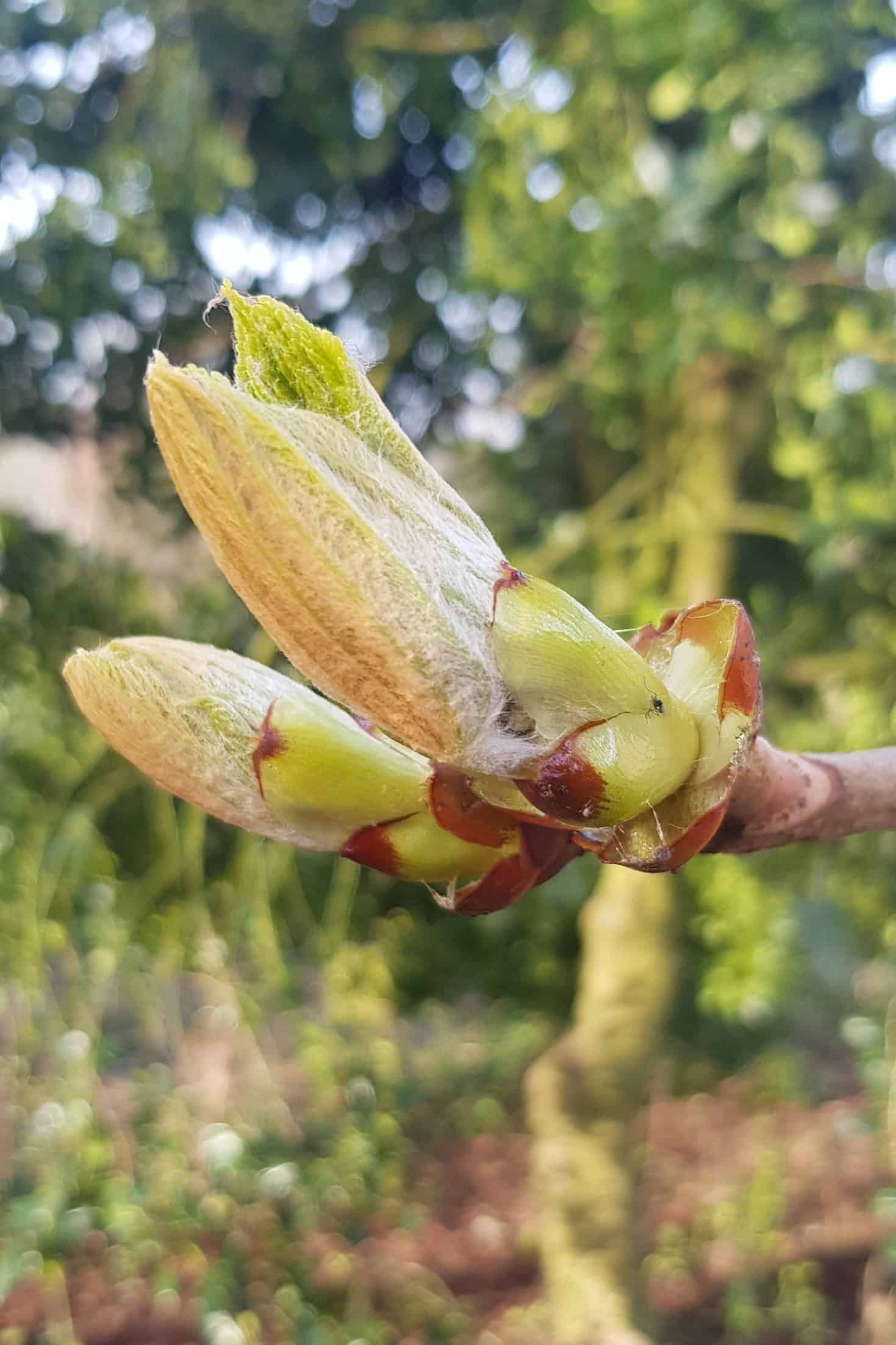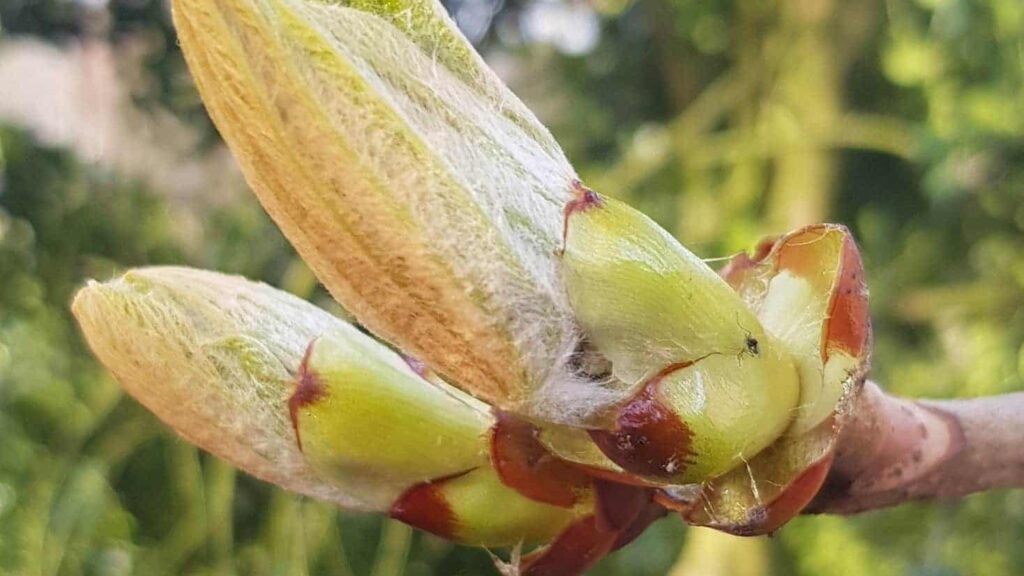 Horse chestnuts (Aesculus hippocastanum) are actually a non-native species, introduced in the 16th century from Turkey, and planted widely in parks, streets, and gardens. This is why you rarely find them in woodlands.
Horse chestnuts (Aesculus hippocastanum) are actually a non-native species, introduced in the 16th century from Turkey, and planted widely in parks, streets, and gardens. This is why you rarely find them in woodlands.
Horse chestnuts can grow up to 40 meters tall and live for over 300 years. This tree species is well known for their beautiful, shiny, deep brown coloured conkers which are enclosed in spiky green cases: an annual marker of autumn and a true childhood treasure!
In winter and early spring, you can identify horse chestnuts by their buds, which are large, dark reddish-brown, oval shaped, and very sticky. By May the trees flower, producing individual flowers with 4 or 5 petals in a beautiful white and pale pink colour. In summer they are instantly recognisable because of their large palmate (hand like) leaves which have 5-7 toothed (jagged and serrated), separate leaflets.
Nobody is quite sure of how the horse chestnut got its English name, but when the leaves fall they leave a mark on the bark which looks a little like a horse shoe with nail holes. Conkers have also been used in horse medicine in the past, which again could have been the origin of the name.
It probably goes without saying that horse chestnuts are now most famous for producing conkers, which have been an autumnal entertainment provider to children since the mid-1800s when the first game of conkers was recorded.
It is said that placing conkers around the house will keep spiders away, although if you choose to use this spider scaring method beware- conkers are mildly poisonous.


